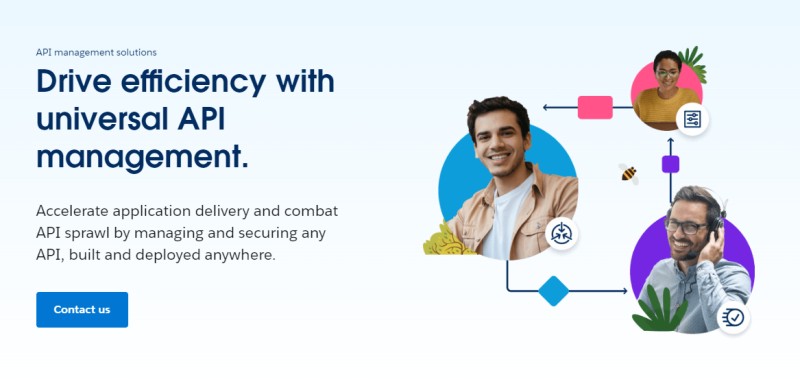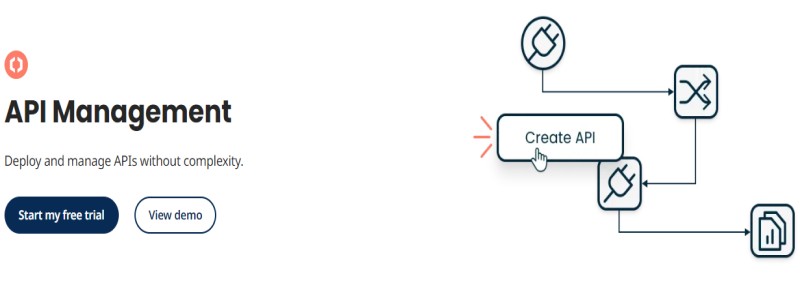We earn commission when you buy through affiliate links.
This does not influence our reviews or recommendations.Learn more.
We will discuss some of the best open-source and managed API gateways for better performance and security.

It is written inLuarunning with the help ofNginx.
It is a template engine that helps to accelerate the event time.
Some of the features offered by Kong are:
Kong got excellent documentation and integration.

Apache ApiSix is being used by companies like360, HelloTalk, NetEase, TravelSky, and many more.
Tyk
Tykis an enterprise-ready open-source API gateway.
You have an option to either go for self-hosted or managed.

The following are some of the out-of-the-box features offered by TYK.
TYK is also available on theAWS marketplace.
A good choice if your software stack is on AWS.

Ocelot
Ocelotis a .NET API gateway.
However, it will work with anything that speaks HTTP and run on any platform that ASP.NET Core supports.
Ocelot act as middleware in a specific order.

It manipulates the HttpRequest object into a state specified by its configuration until it reaches a request builder middleware.
It creates a HttpRequestMessage object, which is used to request a downstream service.
The middleware that makes the request is the last thing in the Ocelot pipeline.

It does not call the next middleware.
A middleware piece maps the HttpResponseMessage onto the HttpResponse object and is returned to the client.
It does not provide support for Chunked Encoding, Forwarding a host header, and Swagger.

Goku
Goku API Gatewayis an umbrella project of EOLINK Inc. Goku provides a graphic interface and a plug-in system to make configuration easier and expand more conveniently.
Apart from standard features, Goku offers clustering, hot updates, alerting, logging, etc.
Express Gateway
Express Gatewayis built onExpress.js.

Express Gateway is a bunch of components that declaratively build around Express to meet the API Gateway use case.
Express Gateways power is harnessed the rich ecosystem around Express middleware.
Companies likeJoyent, The Linux Foundation, VIRICITI, Switch Media, Coozy,andMusementare using Express gateway extensively.

It is simple, fast, and offers all the basic features.
Gloo
Gloois a next-generation fully featured API gateway and Ingress Controller for cloud-native environments.
It is built on Envoy Proxy to connect, secure, and control traffic across your tool services.

It is available as open-source and enterprise both.
The enterprise version offers the following.
KrakenD
KrakenDis an ultra-high performance open-source API Gateway.

It offers a declarative way to create the endpoints.
KrakenD claims to be faster than Kong and Tyk.
Check out thebenchmarking results.

It is not limited to proxy requests to another API.
It provides a simple and intuitive backend to control and manage your API.
Some of the features offered by Fusio are:
and other standard API gateway features.

WSO2
WSO2 is a full lifecycle API Management solution that can be run anywhere.
It comprises a cloud-native API gateway and provides a Kubernetes operator to convert raw microservices into managed APIs easily.
Apigee
Apigeeis a cross-cloud API management platform by Google Cloud.

Cloud Endpoints
Another one by Google Cloud.
Endpointsis a lighter version of Apigee by Google Cloud.
It provides tools and libraries for its clients from the App Engine utility.

Amazon API Gateway
AWS may offer anything you should probably run your applications.
It supports both RESTful and WebSocket APIs and allows us to enable real-time 2-way communication.
Below is the pictorial representation by Amazon, which illustrates how the Amazon API gateway works.

Azure
Why leave Azure behind?
Microsoft Azureoffers end-to-end API management in the cloud, on-premises, or hybrid.
you could manage the API management programmatically through REST API and SDK.

Good news if you use SOAP.
They offer all the standard features, including monetization.
Go ahead and give it a take a stab at experience the platform.

MuleSoft
Manage API and enhance efficiency in your business withMuleSoft.
It allows you to create, secure, manage, and govern universal APIs from any place.
MuleSoft lets you design APIs using different protocols while complying with governance standards and maintaining high quality.

Collect data from APIs to explore, serve, and unify all your data into a GraphQL query.
This can be done with the help of DataGraph.
Create an account in MuleSoft and take a free trial to explore its functionalities.

Boomi API management can handle the complete lifecycle of the APIs in any platform.
This lets you configure your APIs and implement the integrations easily.
Boomi allows you to create omnichannel experiences across social, IoT, and mobile networks.

you might use its API Developer Portal to access data easily from your existing applications.
It also enables you to deploy APIs with third-party authentication system.
By integrating with a simple wizard, Boomi AtmoSphere, you could easily design and manage APIs.
Take a trial of 30 days to understand Boomi from deep and explore its features to manage APIs.
What is API Gateway?
An API gateway is an important concept in a microservices architecture.
It forms an entry point for external clients (anything that is not part of the microservice system).
It is a component that acts as an entry point for an utility.
In other words, an API gateway is an API management server that has information about endpoints.
It is also capable of performing authentication, rate limiting, load balancing, and more.
Why do We need an API Gateway?
To understand the need for an API gateway, lets discuss a use case of an e-commerceapplication.
For illustration purposes, lets list all the microservices that we might need to render the above particular page.
P.S:Above seven(7) microservices are just an assumption to explain the API gateway concept.
In reality, Amazon could have a different number of microservices.
But is it really a good approach?
The Solution
So whats the recommended approach?
It is an API gateway.
In this approach, we have a layer between the client and microservices called an API gateway.
It is a front-facing service for all of the microservices.
Now any client who wants to jump into the microservices, the client has to call the API gateway.
This process is called API composition.
Not only this but using an API Gateway benefits us in many ways.
Lets touch on some of the following benefits.
Every time an API call is performed, it has to dive into the services using public IP addresses.
By switching on to API Gateways, these microservices can be accessed using private IP addresses only.
This results in a more secure way of the transaction of data.
Additionally, the usage of API Gateway also protects the data from malicious and DDoS attacks.
It is important to ensure the authentication and authorization of the user who logs into applications.
The API Gateway makes it easier by being a single entry point and satisfies all the requirements easily.
In the case of multiple requests coming in and increasing traffic, API Gateway helps take care of it.
It is done by creating multiplies of services and calling them on likeRound-Robin.
It can manage and routes the client requests based on user segmentation.
Thus, different quality or speed of content is provided for different users.
This routing can be done based on headers, paths, and params, etc.
An API gateway can keep hold of all the static contents and can directly serve the client.
Similarly, consider a service that evaluates the trending products, and these trends are calculated hourly or daily.
It can act as a protocol adaptor.
Conclusion
Once your API is ready, dont forget to monitor and secure them.
The above should give you an idea about available API Gateway and Management solutions.
If you are under a tight budget, then you’ve got the option to try open-source.
It is the best to install some of them to see what works for you.